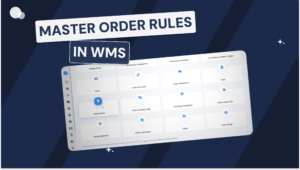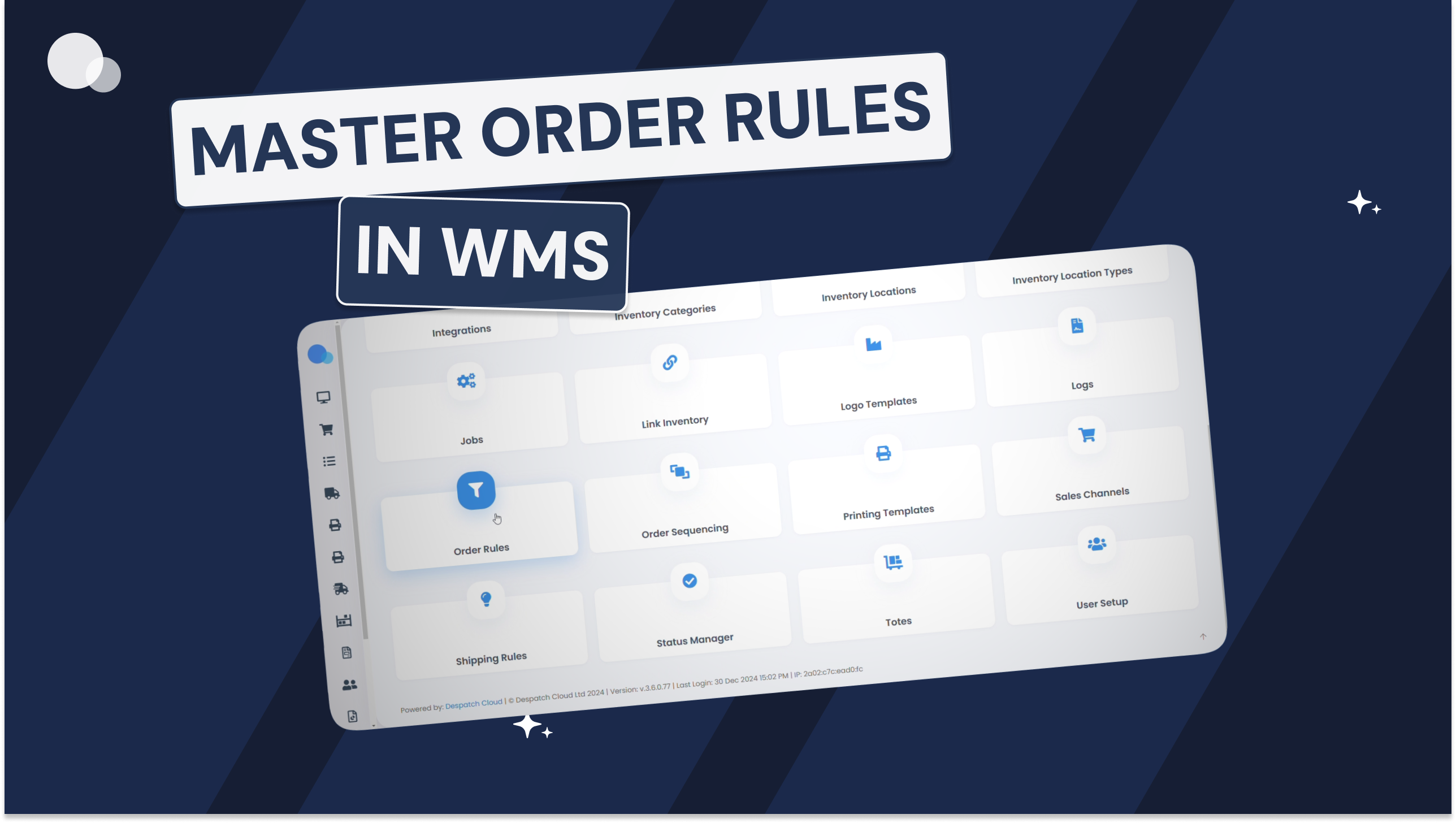
Managing inventory effectively is a crucial element for eCommerce success. Not only does it help avoiding overstocking and stockouts, but it also plays a key role in scaling your online business.
This article explores top inventory management techniques, from just-in-time (JIT) inventory, and the FIFO method, to drop-shipping and ABC analysis, to help maintain optimal inventory levels and enhance customer satisfaction in the competitive eCommerce landscape. Let’s get into it!
Just-in-time (JIT) Inventory Management
When implemented effectively, inventory forecasting can significantly boost operational efficiency and financial health. Always having the right products available when your customers need them will not only help you enhance customer satisfaction, but also minimise holding costs, reduce wastage from overstocking, and streamline your purchasing and production planning processes.
To get started, gather reliable sales data to identify trends and patterns. Analyse this data, considering seasonal variations and market trends to predict future demand accurately. Choose your forecasting method carefully—opt for quantitative methods if you have ample data, or qualitative methods when data is limited. Regularly compare your forecasts to actual sales and adjust your methods to improve accuracy. With these steps, you’ll be well-prepared to meet customer demands effectively.
Inventory Forecasting
Just-in-time (JIT) inventory management is a strategy originated in Japan in which eCommerce companies receive the exact amount of inventory they need, right when they need it. The goal is for companies to retain little to no excess inventory at any given time.
This method, also known as the Toyota Production System, keeps stock at an absolute minimum, proving particularly effective in avoiding overstock situations. This system demands accurate demand forecasting and strong supplier relationships to ensure that materials are available precisely when needed, thereby supporting continuous production flow and reducing operational inefficiencies.
FIFO Inventory Management
FIFO, or «First In, First Out,» is an inventory management method where the oldest stock is sold or used first. This approach is particularly beneficial in industries like food and beverage, where product expiration is critical. By ensuring the oldest items are sold first, FIFO minimises waste and spoilage.
Additionally, this clear and logical flow makes it easier to track inventory costs and match them with sales revenue, leading to accurate and reliable financial reports. FIFO is widely accepted under International Financial Reporting Standards (IFRS), ensuring your financial practices meet global accounting norms.
Dropshipping
Dropshipping is a retail fulfilment method that allows an online store to operate without maintaining a stock inventory. Instead, when a customer places an order, the store forwards it to a drop shipping supplier who then ships the product directly to the customer.
This model is particularly appealing to business owners because it alleviates the need for warehouse space and mitigates the risk of unsold inventory. Not only does it simplify logistics but also enables businesses to test different products without significant upfront investment. By outsourcing order fulfilment, businesses can focus their resources on marketing and scaling their operations.
Dropshipping is estimated to generate over £236 billion annually in eCommerce sales, proving to be a very effective approach in the eCommerce sector.
3PL Fulfilment
Third-Party Logistics (3PL) service providers revolutionise eCommerce by allowing retailers to outsource distribution, warehousing, and fulfilment operations. This model is particularly beneficial for growing businesses as it distributes warehousing and personnel costs across multiple clients, enhancing storage and order processing efficiencies.
By partnering with a 3PL provider, retailers can focus on core business areas without the burden of logistical complexities. These providers offer value-added services such as customised packaging and technology- driven solutions, including integrated warehouse management systems, ensuring swift and reliable order fulfilment. Moreover, 3PLs enable businesses to scale quickly, adapting to market demands without the heavy investment in physical infrastructure or personnel.
Conducting Regular Audits
Conducting regular and comprehensive inventory audits is essential for maintaining operational efficiency and financial accuracy within any eCommerce business. These audits involve meticulous processes that extend beyond simple item counts, requiring a thorough review of inventory management practices and adherence to internal controls.
By regularly verifying inventory levels against records, businesses minimise errors, theft, and stockouts, ensuring that actual stock aligns with documented data. Additionally, regular audits empower businesses with data-driven insights, enabling strategic decision-making to optimise inventory turnover and minimise holding costs. This proactive measure not only enhances transparency and accountability but also safeguards against potential risks such as fraud and compliance violations.
Employing ABC Analysis
ABC analysis is a strategic inventory management technique that categorises items based on their significance to the business’s financial success. Items are ranked into three classes—A, B, and C—based on criteria such as demand, cost, and risk:
- Class A items are the most critical, often comprising about 15% of inventory but accounting for 70% of sales due to their high value or turnover.
- Class B items represent the next tier, offering moderate value.
- Class C includes the least critical items, typically making up the majority of inventory but contributing minimally to overall profitability.
Businesses employ ABC analysis to prioritise resources, focusing on ‘A’ items to ensure availability and reduce stockouts, while minimising costs associated with ‘C’ items. This method leverages the Pareto Principle, which posits that roughly 20% of stock accounts for 80% of a company’s revenue, guiding eCommerce managers to allocate their efforts and resources more effectively.
Inventory Management Software
Choosing the right inventory management software is crucial for streamlining eCommerce operations. Key features to consider include real-time inventory tracking, seamless integration with sales channels, and comprehensive reporting capabilities.
Despatch Cloud offers a robust and versatile inventory management solution designed to meet the needs of modern businesses. By leveraging its features, you can optimise your inventory processes, save costs, and enhance overall efficiency.
Warehouse Management
Often intertwined with inventory management is warehouse management. While both work hand in hand, it’s crucial to understand their distinctions in your eCommerce operations.
Warehouse management focuses on the efficient handling, storage, and movement of goods within the warehouse. This includes optimising the layout for better space utilisation, streamlining the picking and packing processes, and ensuring timely replenishment of stock.
Understanding and isolating these areas allows for smoother operations, ensuring both inventory and warehouse management systems are optimised to support your business growth effectively.
You can read more on warehouse management best practises here.
Conclusion
Mastering ecommerce inventory management is vital for seamless operations and growth. Techniques like FIFO, drop shipping, and 3PL fulfilment help maintain optimal stock levels, reduce costs, and enhance customer satisfaction. Regular audits and ABC analysis provide data for informed decisions, while inventory forecasting prepares businesses for demand fluctuations.
Businesses can leverage inventory management systems and technology such as Despatch Cloud’s to streamline inventory management and improve accuracy in their operations.
Ultimately, effective inventory management is not just about keeping products in stock but about creating a harmonious balance between supply and demand, leading to sustained growth and success in the eCommerce industry.






